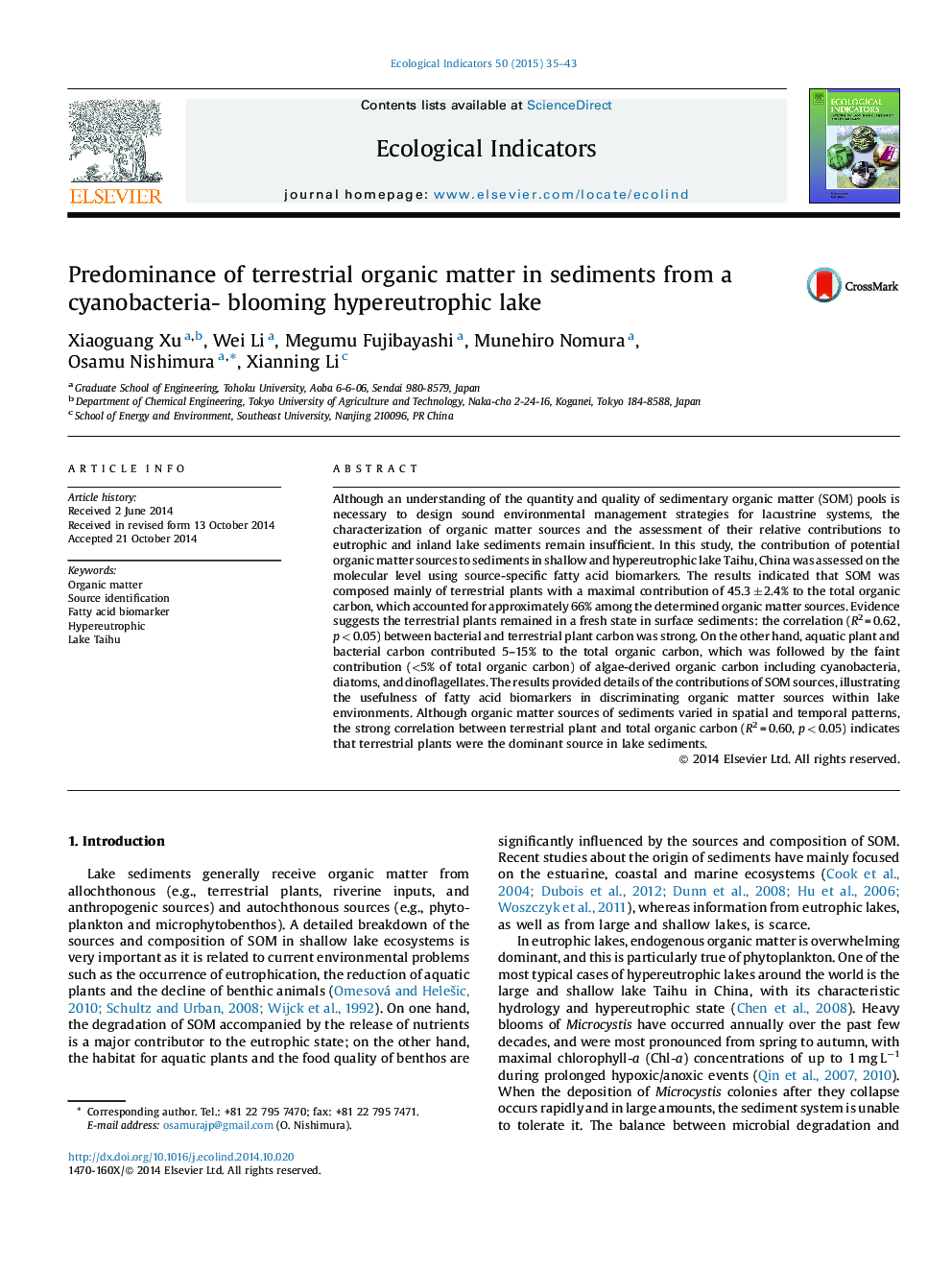| Article ID | Journal | Published Year | Pages | File Type |
|---|---|---|---|---|
| 6294743 | Ecological Indicators | 2015 | 9 Pages |
â¢Multiple SOM sources were identified in a cyanobacteria-blooming hypereutrophic lake.â¢Terrestrial organic matter was the dominant source in the sediments.â¢Fatty acid biomarker was proved to be a useful indicator for SOM sources in lakes.â¢The dominance of terrestrial input was not influenced by spatiotemporal variations.
Although an understanding of the quantity and quality of sedimentary organic matter (SOM) pools is necessary to design sound environmental management strategies for lacustrine systems, the characterization of organic matter sources and the assessment of their relative contributions to eutrophic and inland lake sediments remain insufficient. In this study, the contribution of potential organic matter sources to sediments in shallow and hypereutrophic lake Taihu, China was assessed on the molecular level using source-specific fatty acid biomarkers. The results indicated that SOM was composed mainly of terrestrial plants with a maximal contribution of 45.3 ± 2.4% to the total organic carbon, which accounted for approximately 66% among the determined organic matter sources. Evidence suggests the terrestrial plants remained in a fresh state in surface sediments: the correlation (R2 = 0.62, p < 0.05) between bacterial and terrestrial plant carbon was strong. On the other hand, aquatic plant and bacterial carbon contributed 5-15% to the total organic carbon, which was followed by the faint contribution (<5% of total organic carbon) of algae-derived organic carbon including cyanobacteria, diatoms, and dinoflagellates. The results provided details of the contributions of SOM sources, illustrating the usefulness of fatty acid biomarkers in discriminating organic matter sources within lake environments. Although organic matter sources of sediments varied in spatial and temporal patterns, the strong correlation between terrestrial plant and total organic carbon (R2 = 0.60, p < 0.05) indicates that terrestrial plants were the dominant source in lake sediments.
